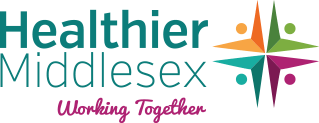PARTNERS WORKING TOGETHER
Living with High Blood Pressure (Hypertension)
By: Stephanie Szylar

According to the Centers for Disease Control and Prevention, about half or 48% of Americans have high blood pressure or hypertension. More than 70% of adults over the age of 65 have hypertension. [4] Hypertension leads to other heart diseases like congestive heart failure and stroke. High blood pressure develops slowly over time and has no symptoms earning the nickname ‘the silent killer’. We are all at risk of developing high blood pressure, but certain risk factors can increase the chances of having high blood pressure. Certain chronic illnesses like diabetes and obesity, lifestyle factors such as smoking, physical inactivity, poor diets, and uncontrollable factors like age or family history all increase the risk. [4]
What is hypertension? Defined as Systolic blood pressure (top number) of 130 mm Hg or above or diastolic blood pressure (bottom number) of 80 mm Hg or above, (130/80) or currently taking medication to lower blood pressure. [4] Blood is pumped out of the heart into the vessels and back again. When vessels are damaged, they narrow, making it more difficult for the heart to pump blood. This results in high blood pressure. High blood pressure has a systemic effect on the body. The damage to the vessels makes them less flexible causing damage to the heart (heart attacks, heart failure), the brain (stroke), and the kidneys (kidney failure). [2]
High blood pressure is diagnosed by taking an average of more than 2 readings on 2 separate occasions with the result being above 130/80. Doctor visits, community screening days or even checking the pressure in a local pharmacy will help in the diagnosis of high blood pressure. [2] Once a patient is diagnosed, managing it is multifaceted and needs consistency.
- Medicine is prescribed with frequent monitoring of blood pressure and clinical outcomes (regular provider visits)
- Increase in physical activity (finding a fun sport to play, walking around the neighborhood, walking the family dog)
- Healthy eating (Mediterranean diet, DASH diet)
- No smoking, no alcohol
- Managing stress (meditation, yoga, breathing exercises, friend and family support)
- Achieving and maintaining a healthy weight
Even with monitoring and lifestyle changes, people with high blood pressure should monitor and notify their provider if they have persistent blood pressure readings of 180/120 with or without chest pain, dizziness, shortness of breath, weakness, confusion, or difficulty speaking. [1] These could be signs of a life-threatening condition like stroke or heart attack.
Living with chronic illnesses like high blood pressure requires daily maintenance, monitoring, and support. Choosing a healthy lifestyle early in the diagnosis will help prevent future complications. Utilizing blood pressure screenings in your local community can be a great way to inexpensively monitor your numbers in between doctors visits.
Follow @HealthMiddlesex on Facebook, X (Twitter), and Instagram for more information on community screenings, health fairs and education near you.
References
[1] American Heart Association (2024). When To Call 911 About High Blood Pressure. Retrieved from https://www.heart.org/en/health-topics/high-blood-pressure/understanding-blood-pressure-readings/hypertensive-crisis-when-you-should-call-911-for-high-blood-pressure
[2] Centers for Disease Control and Prevention (2024). About High Blood Pressure. Retrieved from https://www.cdc.gov/high-blood-pressure/about/index.html
[3] Centers for Disease Control and Prevention (2024). High Blood Pressure Risk Factors. Retrieved from https://www.cdc.gov/high-blood-pressure/risk-factors/index.html
[4] Fryar C.D., Kit B., Carroll M.D., Afful J. (2024). Hypertension prevalence, awareness, treatment, and control among adults age 18 and older: United States,. National Center for Health Statistics. NCHS Data Brief, no 511. Retrieved from DOI: https://dx.doi.org/10.15620/cdc/164016




